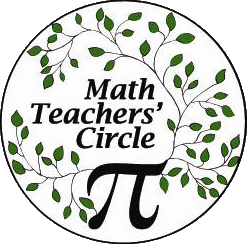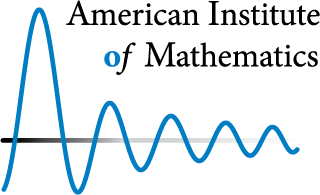
Tiling with Pentagons
Exploring newly discovered math
Judith Covington
Like the MTCircular? Subscribe to our free semi-annual magazine.
On August 14, 2015, Casey Mann, Jennifer McLoud, and David Von Derau of the University of Washington Bothell announced that they discovered a new irregular pentagon that would tile the plane. Prior to this announcement there were only fourteen known types of pentagons that tile the plane. In 1918, Karl Reinhardt discovered the first five, and in 1968, Richard Kerschner discovered three more. In 1975 Richard E. James III found a ninth. Marjorie Rice, an amateur mathematician, discovered four new types in 1976 and 1977. In 1985, Rolf Stein discovered the fourteenth. Then, in 2015, the publication of the fifteenth pentagon appeared. (Interestingly, in 2017, Michaël Rao proved that there were no more than these fifteen.)
“Tiling with Pentagons” became one of the best sessions of Fall 2015 for the North Louisiana Math Teachers’ Circle in Shreveport, Louisiana. The participants loved working with newly discovered mathematics that they could use in their own classroom.
To start the session, we did a quick review of convex polygons and their properties. In particular, the participants reviewed the names of certain polygons and worked to find the measure of each angle of a regular polygon with sides from three to twelve. The teachers recalled that a regular polygon has sides of the same length and angles of the same measure. Starting with the fact that the angles of a triangle have a sum of 180 degrees, teachers were encouraged to find a formula that would work for any convex polygon.
After mastering this information about convex polygons, we moved on to regular tessellations. A regular tessellation uses copies of the same regular polygon to cover a flat surface (plane) with no holes and no overlap. Furthermore, the number of polygons meeting at each vertex should be the same for all vertices. Teachers used the term “covering a point” to indicating the filling of all space surrounding a vertex. This meant that the sum of the angles meeting at one vertex must be 360°. The participants quickly discovered that the triangle, square and hexagon are the only regular convex polygons that will tessellate. When asked for a proof of this fact, the teachers shared that these are the only regular polygons whose individual angle measures are factors of 360 degrees.
The discussion then turned to other ways to tessellate. Possibilities discussed were: allowing the use of more than one shape; allowing the number of polygons meeting at a vertex to be different; or using non-regular polygons. With a bit of guidance, the participants focused on whether there are any non-regular convex polygons that always tessellate. The discovery was that any triangle or any convex quadrilateral will tessellate. Arranging six copies of a triangle so that each angle of the triangle appears twice at each vertex will cover the plane. The sum of the angles of a triangle is 180° and if two copies of each angle meet at a vertex, the sum will be 360°. Similarly, any convex quadrilateral will also tile the plane since the sum of the angles in a convex quadrilateral is 360°. Arranging the quadrilaterals so that each angle meets at one vertex will cover the plane.
Next, we discussed pentagons. The participants knew that not all pentagons would tile the plane, since the regular pentagon does not tile the plane. However, they wondered if there were any convex pentagons that would tile the plane.
At this time, the teachers split into five groups. Each group received a few card stock sheets of a unique pentagon and asked whether that pentagon would tessellate. We called the different pentagons A, B, C, D, and E.

The teachers cut out multiple copies of their pentagon and arranged them on tables. Some of the pentagons proved easy to tessellate. In other cases, the participants reached the decision that the shape would not tessellate.
As the teachers struggled to get some of the shapes to tessellate, we gave some additional information about the sizes of the angles, in the hope that this would allow them to see arrangements of angles that would add to 360 degrees. Some of the groups found the additional information helpful and were then able to create a tessellation, but some groups still struggled with the more difficult shapes.
| Shape One (A) | B + C = 180°, A + D + E = 360° |
| Shape Five (B) | a = b, d = e, A = 60°, D=120° |
| Shape Six (C) | a = d = e, b = c, B + D = 180°, 2B = E |
| Shape Thirteen (D) | d = 2a = 2e, B = E = 90°, 2A + D = 360° |
| Shape Fifteen (E) | a = c = e, b = 2a, A = 150°, B = 60°, C=135°, D = 105°, E = 90° |
After each group had time to explore and share their experiences, they learned that all of the pentagons provided would cover the plane. This lead to a discussion of the history of tessellating with convex pentagons. At this point, the teachers were informed that Shape E had been discovered only a few months prior to our meeting and was the fifteenth type of polygon that would tessellate. This led to an exciting discussion of the methods used to discover this new type. To end the meeting, we shared links to recent press items.
A few months later, when discussing artwork for a new t-shirt for the group, the teachers wanted to put the fifteenth pentagon tiling on the back of our shirts with the words, “Discovering New Math Every Day!”
Working with newly discovered mathematics was a thrilling experience for all. There were no textbooks or daunting formulas, just observations, patterns, discussions, and lots of inquiry.
This session could be part of a larger series of sessions on tilings. See, for example, White and Bennett’s article on semi-regular tilings in the Summer/Autumn 2016 MTCircular, and Rodin’s article on Escher-like tilings in the Summer/Autumn 2014 MTCircular.
Resources
- Session handouts:
- Pentagon shapes template (Word doc)
- Other MTC sessions on tilings:
- Rodin, Altha. “Regular, Semi-regular, and Escher-like Tilings.”
- White, Nina, et al. “Semiregular Tilings.” MTCircular, Summer/Autumn 2016.
- Press items:
- Bello, Alex. Attack on the pentagon results in discovery of new mathematical tile. The Guardian, 11 Aug 2015.
- Wolchover, Natalie. Marjorie Rice’s Secret Pentagons. Quanta Magazine, 11 Jul 2017.
- Wolchover, Natalie. Pentagon Tiling Proof Solves Century-Old Math Problem. Quanta Magazine, 11 Jul 2017.
- Wikipedia entry on Pentagonal Tilings
This article originally appeared in the Spring 2018 MTCircular.
 |
Judith Covington, a co-founder of the North Louisiana MTC, is a Professor of Mathematics at Louisiana State University Shreveport. |
MORE FROM THE
SPRING 2018 MTCIRCULAR

|
Touching InfinityHyperbinary numbers and fraction trees
|

|
Listen, Share, PlayLessons from preschool for problem solving
|
 |
Locked OutA breakout box session for your Circle
|

|
Bolognese Wins Statewide Teaching AwardColumbus MTC leader was recognized by the Ohio Council of Teachers of Mathematics
|
 |
Finkel, Jones Present at International ConferencesTwo MTC leaders present in Australia and Colombia
|

|
Shubin Honored with Mary P. Dolciani AwardMTC Network leader honored for bringing Math Circles to new communities
|

|
Engle, Danforth-Clayson Win Rosenthal PrizeBay Area MTC members win national math curriculum writing contest
|
 |
A Note from AIMA commitment to ourselves, our students, and each other
|
 |
OpportunitiesSpecial events, recognitions, careers
|
 |
Dispatches from the CirclesLocal updates from across the country
|

|
Global Math Week“Exploding Dots” from coast to coast
|

